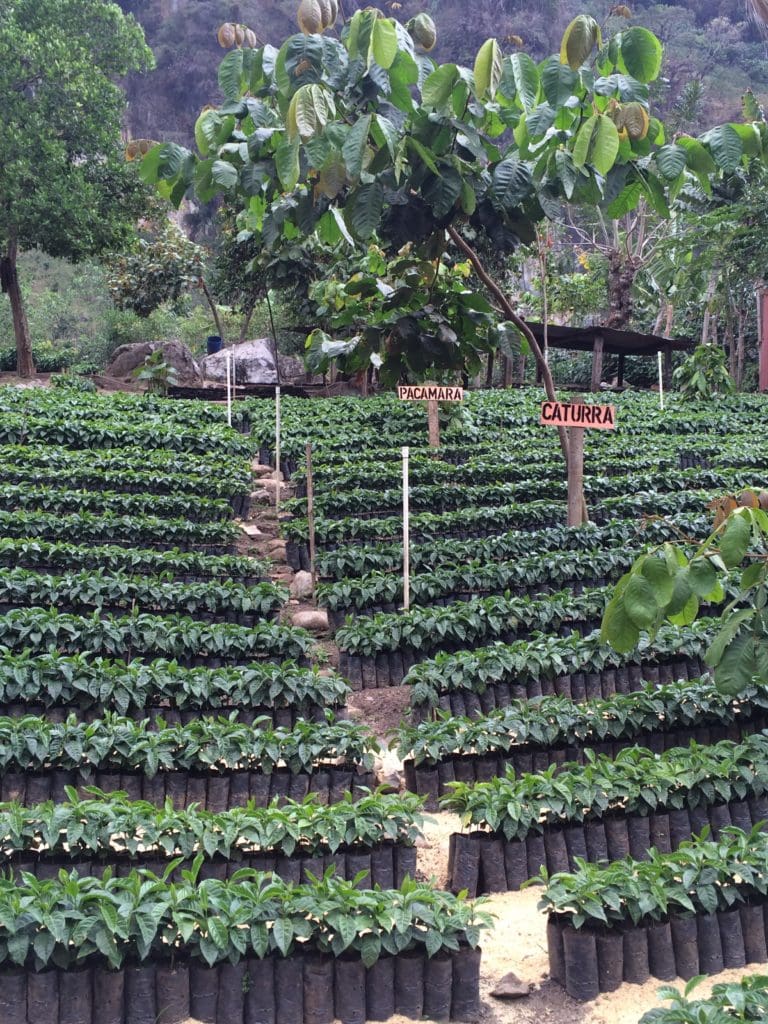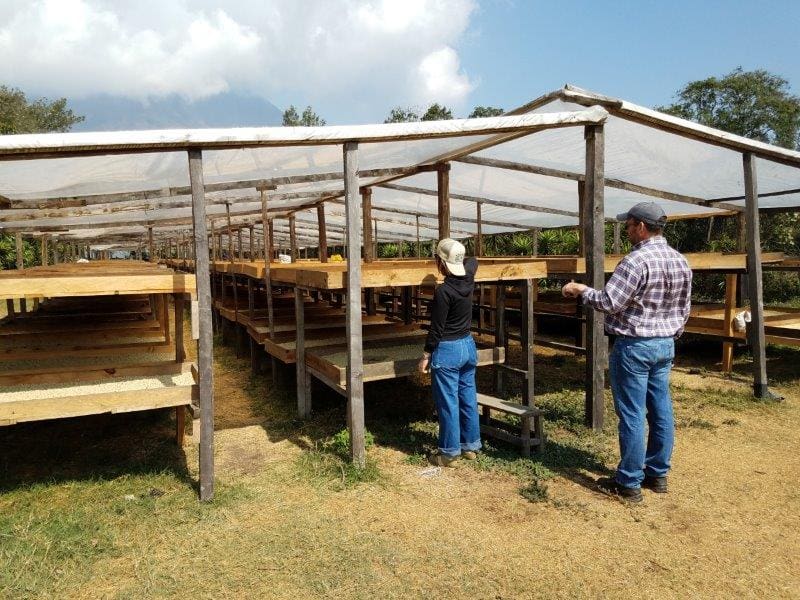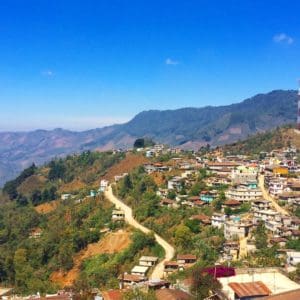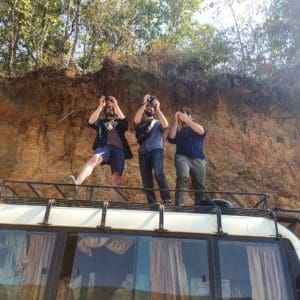This year we had the opportunity to spend two weeks in Guatemala, on two separate occasions. The first was our annual origin trip to visit current and prospective producer partners. We were lucky to have Karla Diab from Westrade Corp join us again. Just a few weeks later we returned to host the 5th Annual Cupping Competition featuring CODECH, one of our long term FTO cooperative groups located in Huehuetenango.
Currently, we work with two estate owners in Guatemala – Renardo Ovalle Vides who owns several farms in Huehuetenango, and Juan Francisco Pira who owns Granos del Sur (a grain supply company) as well as Beneficio Santiago La Laguna on the shores of Lake Atitlán. We began the trip with Renardo "Nayo" Ovalle Vides of Vides 58 Coffees. Renardo and his family own Finca La Bolsa, located in La Libertad, Huehuetenango. The setting of Finca La Bolsa is magical. Cuddled by two mountains, the temperature is cool (yet humid) for much of the day. Finca La Bolsa has a long history of producing award winning coffees, but today Nayo is most focused on renovations and planting in areas previously untouched by coffee. The variety garden is quite impressive, as it boasts a nursery full of Gesha, SL 28, Caturra, Pacamara, Typica, Yellow Bourbon and more. A few years ago, Nayo began planting at higher altitudes and although plants are maturing slowly, he is hopeful for a stellar cup quality. We look forward to our offering from Nayo this summer.
Next, we traveled east to unite with Juan Francisco Pira, who owns two estates in Atitlán. The first is Finca La Providencia, which sits at an elevation of 1600 masl and comprises about 90 manzanas. This year the farm produced nearly 1200 bags of exportable green coffee, the majority of which is Villa Sarchi, Bourbon, Caturra and Catuai. Finca Alto Refugio is Juan’s higher elevation and slightly smaller farm of approximately 50 manzanas. Typica, Caturra and Bourbon make up the farm's production of roughly 800 exportable bags of green coffee. As the crow flies, Alto Refugio is fairly close to Finca La Providencia, but it has an entirely different micro-climate and harvest is approximately one month behind that of its sister farm. Every afternoon a deep fog sets in over the farm, originating as mist easing off of the Pacific Ocean, which can be seen in the distance. Juan Francisco also purchases cherry from local producers who have small coffee farms on the lands surrounding his wet mill on Lake Atitlán. The best cherries are selected and blended together for Monja Blanca, an Atlas profile offering. Beneficio Santiago La Laguna is his state-of-the-art wet-processing facility, with a capacity to process 10,000 bags per harvest. Juan experiments with several different types of fermentation processes, both with and without water and for varying lengths of time. He has a large patio space for drying coffee as well as over 50 raised beds, situated a few hundred feet from the lake shore. Cupping and quality control is also conducted at the wet mill facility.
Shortly after we returned from our February visit to Guatemala, we had the opportunity to visit again just a few weeks later in mid-March for our Fifth Annual Cupping Competition featuring CODECH in Concepción Huista. We brought along eight historical roaster/buyers from across the US and Canada, and cupped through more than 55 coffees over three days. CODECH is comprised of four base cooperatives: ADIPY, ADINTHEC, ADAT and Bitenam. Its members represent the Popti, Mam, and Q’anjob’al branches of the Mayan family and they produce some of the best FTO coffees we've had the pleasure of tasting.
Most of the coffee is grown at very high altitudes, with some areas approaching 2100 masl. Members are focused on the production of Caturra, Bourbon, Pache Verde and Criollo. This year was full of excitement as the producers of the top five highest scoring coffees had not placed in the winning bracket in prior years. This is pure evidence that members across the cooperative continue to increase quality. Attracted by the quality premiums awarded for outstanding coffee as well as the training and agriculture assistance that the base associations provide, the group continues to add new producer members. CODECH has developed quite a following of loyal customers and they continue to work hard to improve cup score, moisture level, and timely exports. We look forward to receiving these coffees, which will be available on both coasts in July, so please be on the lookout!
CODECH will be celebrating their twentieth anniversary next year and we look forward to honoring their hard work and successes alongside them!



